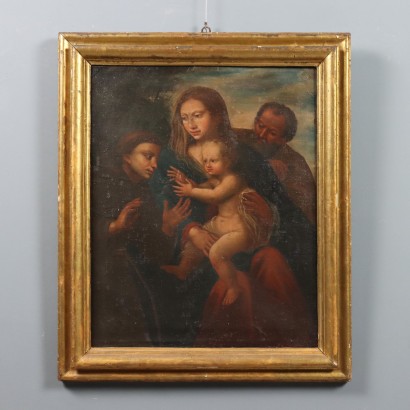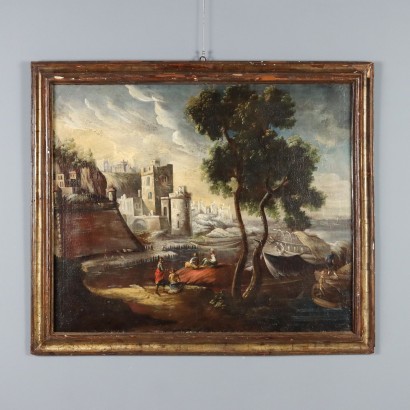Price
Age
Subject
- Neoclassical decoration [1]
- Figures of Saints [11]
- Biblical scene [7]
- Architectural capriccio [3]
- Historical-literary subject [1]
- Seascape with figures [1]
- Battle [2]
- Still life [7]
- Historic Subject [6]
- Landscape with Figures [26]
- Marine Landscape [1]
- Landscape with Architecture [2]
- Portrait/Face [7]
- Allegorical/Mythological Subject [4]
- Sacred Subject [27]
- Interior Scene [1]
- Genre Scenes [9]
- Scene with Figures [3]
Artist
- Antonio Francesco Peruzzini [1]
- David Teniers III [1]
- Carlo Antonio Crespi [1]
- Bartolomeo Arbotori [1]
- Jacopo Bassano [1]
- Marco Ricci [2]
- Hercules Sanders [1]
- Vincent Malò [1]
- Giuseppe Maria Crespi [1]
- Michiel Carree [1]
- Christian Georg Schütz I [1]
- Baldassarre D'Anna [1]
- Francesco Dal Ponte, ovvero Bassano il Giovane [1]
- Pierre Mignard [1]
- Frans Francken II detto 'il Giovane' [1]
- Michelangelo Pergolesi [1]
- Girolamo Forabosco [1]
- Marco Alvise Pitteri [1]
- Guido Reni [2]
- Giacomo Francesco Cipper [2]
- Andrea Del Sarto [1]
Artistic technique
Technical specification
Artistic school
- Central European school [5]
- Central-Italian school [7]
- Emilian School [4]
- Flemish School [2]
- French School [4]
- Genoese School [3]
- Italian School [3]
- Lombard School [5]
- Neapolitan School [2]
- North-European School [3]
- Roman School [3]
- German School [1]
- Tuscan School [1]
- Venetian School [8]
- North Italy School [11]
Dimensions
ApplyANCIENT PAINTING
FREE SHIPPING
In this section you can find all the Ancient Painting works available in our online catalogue. A wide and refined selection that includes Landscapes , Still Lifes , Portraits , faces, Sacred Subjects , glimpses and views with which you can enrich any room in your home.
Do you have similar artwork to sell? Contact us! 


Sort by




































